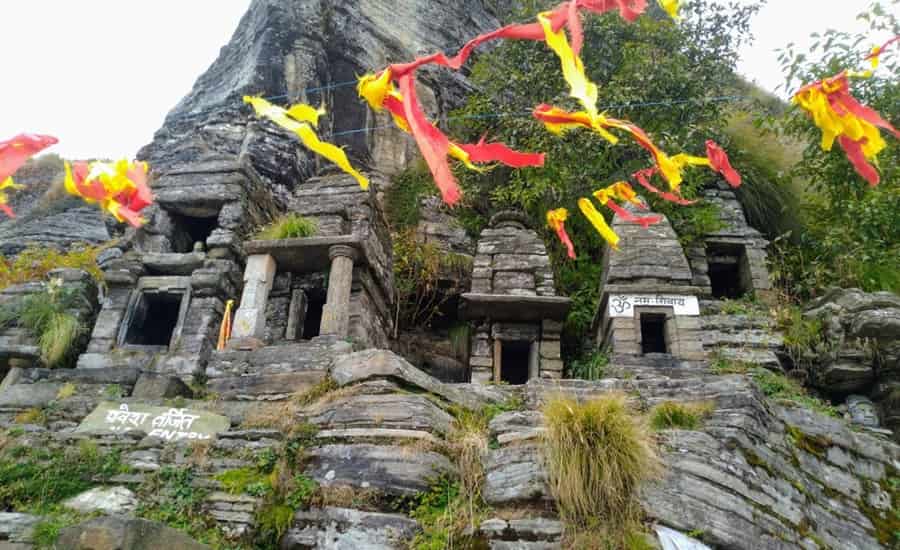Located in the Garhwal Himalayas of Rudraprayag District, Rudranath Temple is one of the most popular religious temples of Lord Shiva and one of the Panch Kedars. The temple is steeped in mystery, enchanting tales and legends which for decades attracts travelers and devotees from across the globe. It is impossible to tell the exact date of the construction of Rudranath Temple as the temple is centuries old which makes it quite mesmerizing to view.

The Interesting History of Rudranath Temple
The history of Rudranath temple is quite interesting. It is difficult to know with limited resources of our ancient past the exact date of the construction of Rudranath Temple but many interesting tales, myths and legends help us to reconstruct its history. Here is the story in Detail-
- There is a tale associated with the aftermath of the Kurukshetra war. After the war Pandavas of Mahabharata, despite their victory were guilt ridden due to the killings of their relatives, teachers and brothers. They wanted to apologize to Lord Shiva who was unhappy with the outcomes of the war.
- In the quest for redemption, they sought Lord Shiva’s forgiveness and began their journey to holy Kashi. Lord Shiva didn’t want to forgive them so easily, so he eluded them and moved to Guptkashi and then to Kedar region.
- The turning point came when Bhima, one of the five Pandava brothers, recognized the disguised Shiva who took the divine form of a bull. He tried to capture the bull but Lord Shiva left behind five sacred body parts which fell in different places. These places became the site of Panch Kedar Temples.
- The Panch Kedar Temples were formed where parts of Lord Shiva’s body fell-
- Kedarnath – Hump
- Tungnath – Arms
- Madhyamaheshwar – Navel & Stomach
- Kalpeshwar – Hair
- Rudranath – Face
- At Rudranath, lord Shiva’s face emerged in the form of Jyotirlinga. The Pandavas’ devotion pleased Lord Shiva and he forgave them, leaving us the legacy of Pandavas quest for forgiveness.
Winter Home
Rudranath Temple is entirely covered in snow during winter. The idol of Rudranath is transported to Gopinath Mandir in Gopeshwar for worship. This tradition of the procession known as the Doli Yatra is a symbol of the enduring bond between devotees and their divine. Devotees at Gopeshwar continue to pay their respects and offer prayers even in the non-peak season.
Panch Kedar Pilgrimage
Rudranath is the fourth stop for Chaturth Kedar in the esteemed Panch Kedar pilgrimage circuit. Panch Kedar is a divine pilgrimage route to get darshan of five prominent temples of Lord Shiva. Pilgrims undertake a difficult journey in the high altitude Himalayan region to pay homage at each sacred shrine. The pilgrimage circuit of Panch Kedar starts at Kedarnath and continues through Tungnath, Rudranath, Madhyamaheshwar, and ends at Kalpeshwar.
Conclusion
In conclusion, the history of Rudranath Temple is a tale of undying faith and spiritual awakening. The temple is a lasting legacy of Pandavas and our religious and cultural heritage. One must visit Rudranath Temple to embrace the sacred path leading to inner peace.
Also Read:

 Call
Call WhatsApp
WhatsApp Enquiry
Enquiry